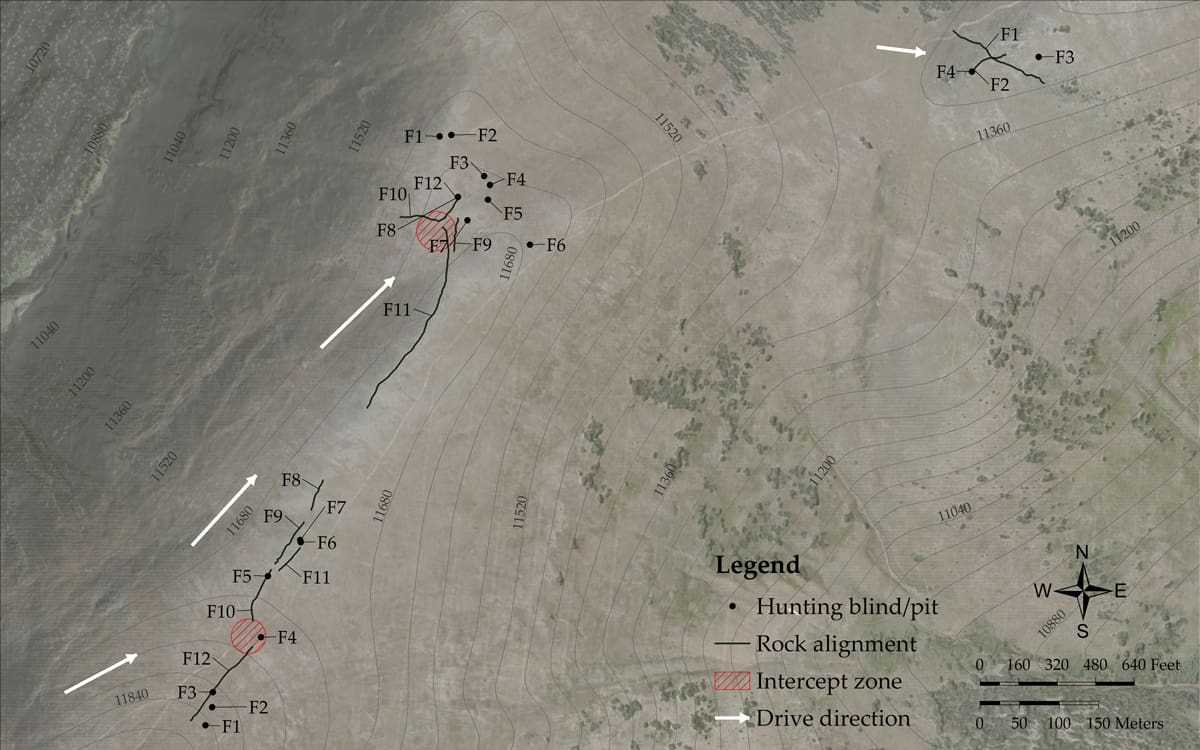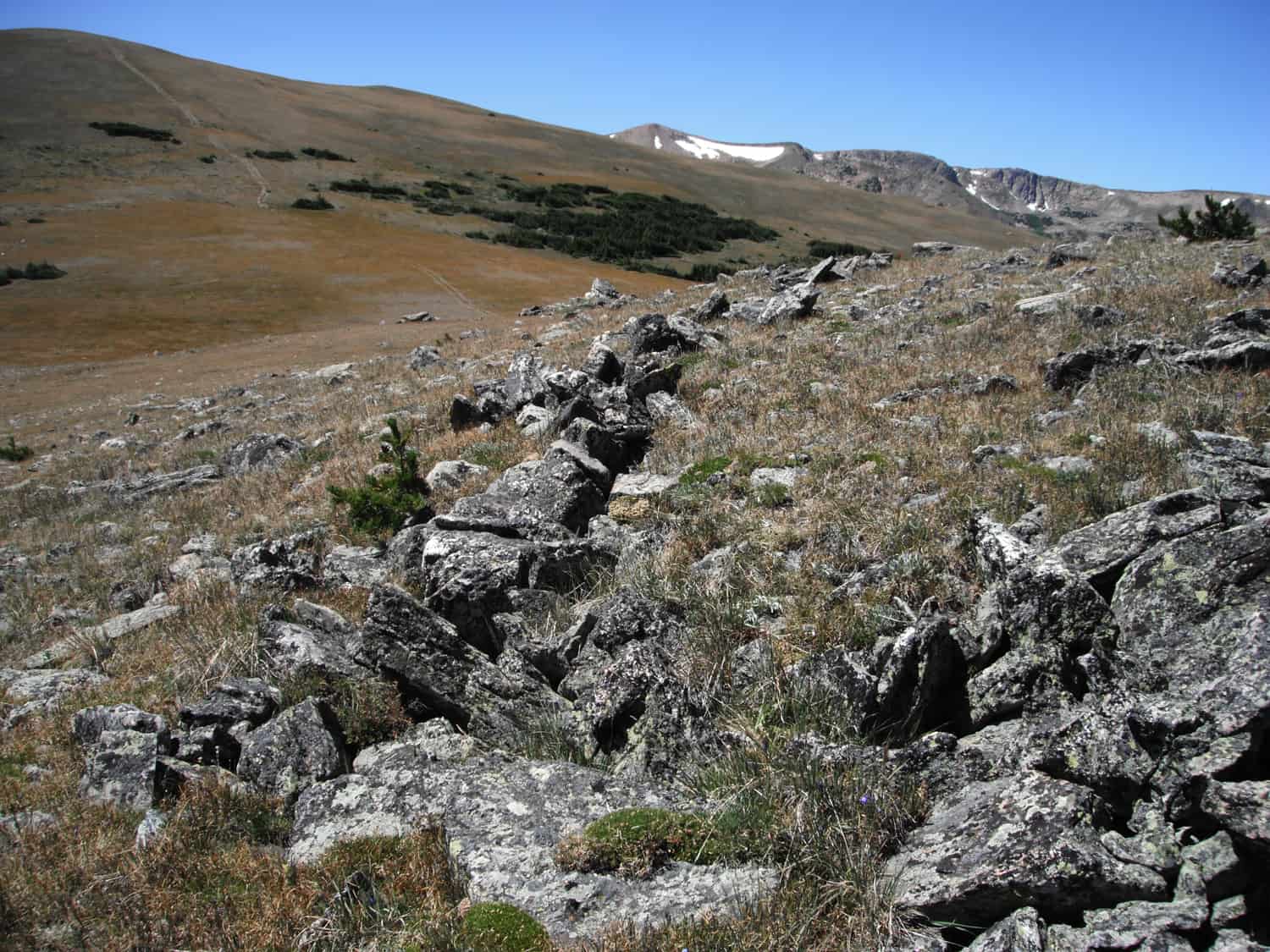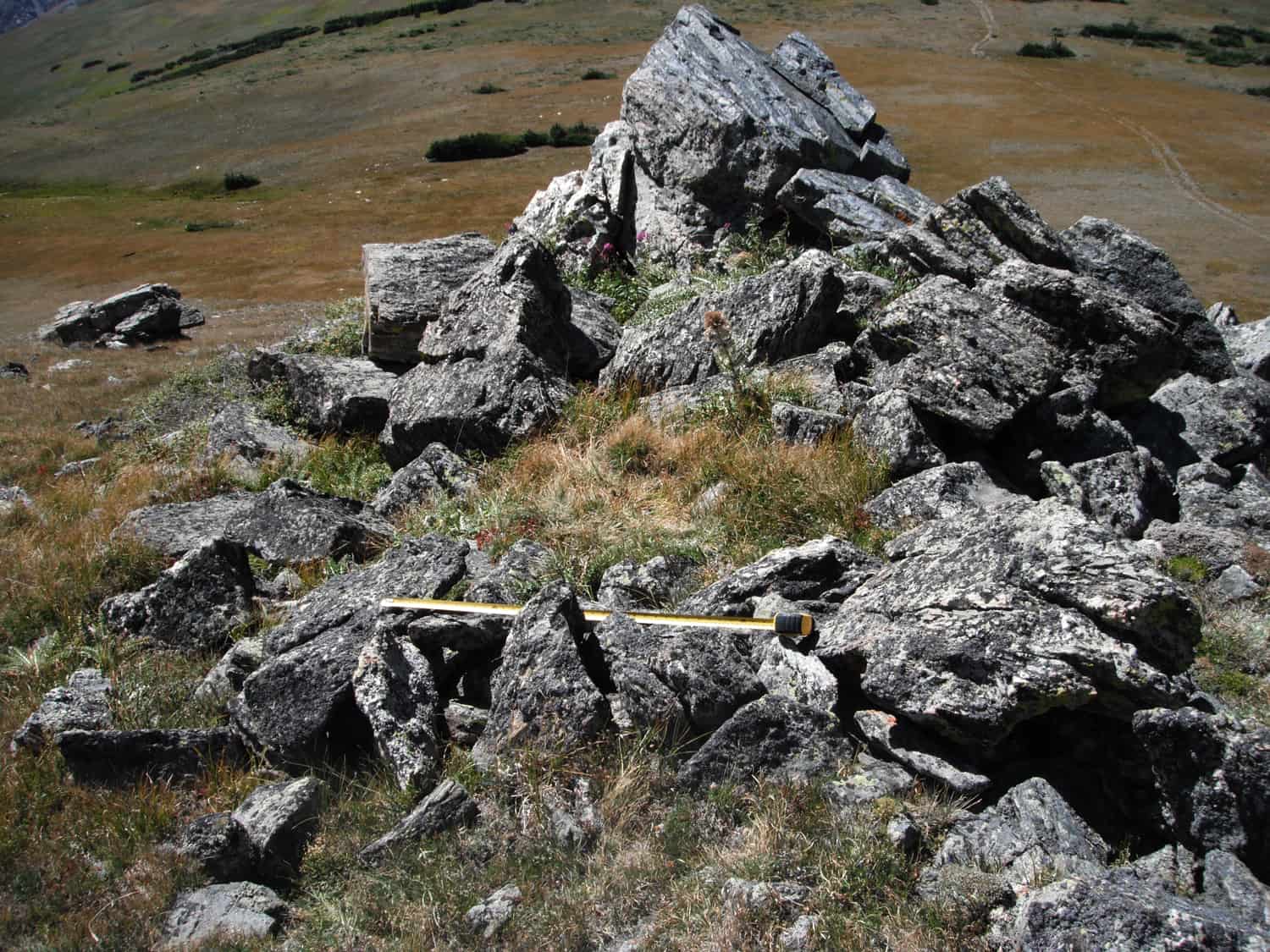Long before settlers discovered gold and other precious metals in Gilpin County, Colorado, Native Americans hunted for food above the tree line. Herds of elk and other game wander these high reaches during the summer months. There was little cover and too many escape routes for their prey. Hunters had to work as a team to have a successful hunt.

Gilpin County, Colorado
Hunting without cover
Game drives were built using rocks gathered from the rocky terrain. The drives were long, low stone walls that tricked the herd into thinking there was a barrier and they would follow the line. Sometimes a second line was built to form a V- or U-shaped pattern that guided the animals to a dead end, or intercept zone. They would also include hunting blinds along the path for hunters to hide behind. Hunters placed themselves at the dead end and throughout the drive line to take down animals as they passed by.
The remnants of these game drives can still be found today. Metcalf Archaeology and the Gilpin Historical Society teamed up on the James Peak Wilderness Archaeological Project. The project aimed to better understand how Native Americans used the terrain and abundant resources of the mountains to their advantage as part of their seasonal living pattern. In August 2019, Metcalf archaeologists Aaron Whittenburg and Mike Metcalf led two volunteers for four days of surveying to look for these hunting sites. Their survey area was located on the north side of James Peak, between South Boulder Creek and Mammoth Gulch.

Three game drive systems in the James Peak Wilderness area.
Working fast
This survey resulted in the discovery of three game drive systems. Each had several segments of drive lines, hunting blinds, and other features. One small artifact was also found. Metcalf archaeologists determined that these particular sites were likely built quickly from a chance encounter with wildlife. The herd’s movements were not easy to predict. Hunters had to work fast to get set up. In the case of these three game drives, there is some evidence that hunters used some of them two or three times.
Feature: A constructed, non-moveable object at an archaeology site

A drive line in the northeastern drive system. August 27, 2019
Mobile tools
Typically, arrowheads, dart points, and knives are the only stone tools found at these drives. Other tools such as scrapers and grinding slabs are usually found where hunters spend more time, such as camps. The one artifact that was found during this survey was a small, thin flake of stone which could be from sharpening a stone tool. Tiny flakes are carefully removed from the edges of the tool to thin the blade. A hunter could have been sharpening their tool while they waited.

A hunting blind from the middle game drive system. August 28, 2019
Just the start
The 2019 survey was just the first phase of the James Peak Wilderness Archaeological Project. It was funded by a State Historic Fund grant from History Colorado. The goal of this phase was to determine the archaeological potential of the area. Projects like this help us understand how native peoples hunted and lived on these unforgiving landscapes.
For more information, see the full presentation created for Gilpin Historical Society by Aaron Whittenburg at: https://www.gilpinhistory.org/jame-peak-survey-project
